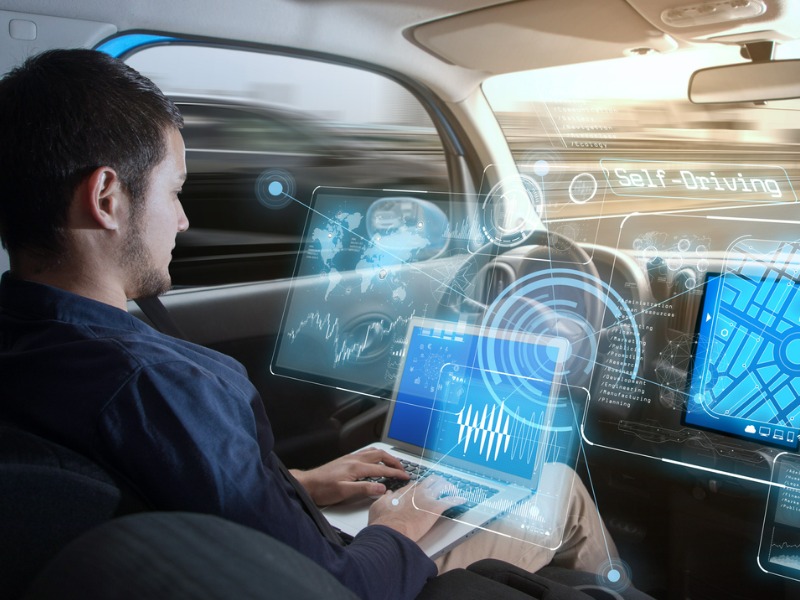How auto insurance will navigate a world with self-driving cars

Self-driving cars have been a part of visions of the future for decades, and what was once only imaginary has started to become reality.
Not only do self-driving cars exist, but five U.S. states (Arizona, California, Michigan, New Hampshire and Ohio) allow driverless cars to be tested on public roads without any person in the vehicle. Another 32 states allow testing with a safety driver present.
Ontario began a 10-year pilot project in 2016 to allow testing of automated vehicles on public roads. Like most U.S. states, Ontario requires the presence of a safety driver, and testing is strictly regulated by the Ministry of Transportation. The vehicle owner must carry at least $5 million in liability insurance.
At some point, automated vehicles will likely be approved for sale and general use by consumers, with the anticipated societal benefit of a substantial reduction in the number of automobile accidents.
A recent study from the U.S. National Highway Traffic Safety Administration suggests 94% of automobile accidents are linked to driver error. Sharply reducing automobile accidents could save billions of dollars for insureds and insurers.
Changes for insurers
Reducing driver-caused accidents means insurers will have to cope with new types of auto losses and how to allocate their costs. For example, unexpected programming glitches might occur in a vehicle’s systems, resulting in an accident. Or a user may fail to update the operating system, causing the vehicle to operate inappropriately. Weather might still lead to accidents, but in unexpected ways. For instance, freezing rain or snow might cause sensors to malfunction or fail.
Worse, hacking could place autonomous vehicles under the control of malevolent actors. Another emerging danger is that pedestrians might take more risks knowing that autonomous vehicles are designed to respond to their presence.
However safe autonomous vehicles become, accidents are bound to happen – just not in the ways we anticipate and not for the same reasons they happen now.
This means the traditional method of allocating risk, the driver-negligence model, won’t be suitable for a world with widespread autonomous vehicle usage. Automobile insurance and insurance regulators will need to adjust.
Among the main alternatives to the current model is a mandatory no-fault system, in which injured persons aren’t permitted to sue over an automobile-related injury. Instead, the injured person would receive a set amount of benefits and compensation from a designated source.
Ontario currently has a hybrid no-fault system, with injured persons receiving statutory accident benefits from their own insurer (in addition to being able to sue the at-fault driver), so it’s not a stretch to anticipate a return to a full no-fault system.
That said, Ontario previously experimented with a full no-fault system from January 1994 to October 1996. It is largely considered a failure.
Liability alternatives
Another alternative is a product liability system, in which the manufacturer of the autonomous vehicle would be liable for injury resulting from its use.
Different variations of product liability could be implemented. On the more consumer-friendly side, a manufacturer might be held strictly liable for any injury caused by an autonomous vehicle, even if it exercised all possible care to remove defects. This approach is somewhat similar to the no-fault system, except that the party paying compensation is the manufacturer, rather than the injured person’s own insurer.
On the more auto industry-friendly side, the law might require an injured party to prove negligence on the part of the manufacturer. That approach could be expensive and resource-heavy. Imagine the burden on an injured party under this system: rather than proving a driver was looking the wrong way, or was driving too fast, the plaintiff may have to examine millions of lines of coding and prove the coding used by the manufacturer was below industry standard. And they’d have to show some alternative line of code should have been used.
What’s ahead?
Some jurisdictions are implementing new insurance schemes to handle autonomous vehicles. In 2018, the U.K. enacted the Automated and Electric Vehicles Act, which created a new direct cause of action by an injured person against the insurer or owner of an autonomous vehicle if the accident was caused while the vehicle was driving itself.
The act also preserves the reduction of damages based on contributory negligence resulting from the injured person’s actions, and allows the insurer to avoid or limit its liability if unauthorized software alterations are made or there’s been a failure to update safety-critical software.
As auto insurance premiums continue to rise, and as car insurance remains front-and-centre in provincial election campaigns, Ontario is due for a change to its automobile insurance regime.
The last major change was the 1996 move to a hybrid tort and no-fault system. The next big change will need to prepare Ontarians for a system in which autonomous vehicles are a reality rather than a far-fetched dream.
Tim Crljenica is a partner at Thomas Gold Pettingill in Toronto. This story is excerpted from one that appeared in the August-September print edition of Canadian Underwriter. Feature image by iStock.com/metamorworks







